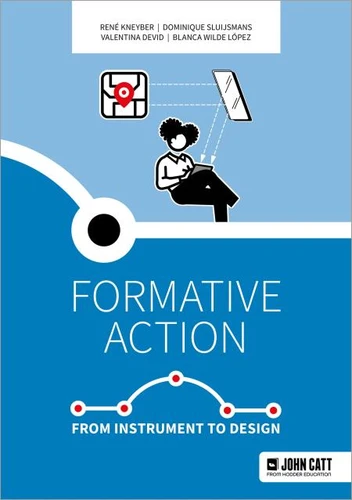Formative action: From instrument to design
Par : , , ,Formats :
Disponible dans votre compte client Decitre ou Furet du Nord dès validation de votre commande. Le format ePub protégé est :
- Compatible avec une lecture sur My Vivlio (smartphone, tablette, ordinateur)
- Compatible avec une lecture sur liseuses Vivlio
- Pour les liseuses autres que Vivlio, vous devez utiliser le logiciel Adobe Digital Edition. Non compatible avec la lecture sur les liseuses Kindle, Remarkable et Sony
- Non compatible avec un achat hors France métropolitaine
 , qui est-ce ?
, qui est-ce ?Notre partenaire de plateforme de lecture numérique où vous retrouverez l'ensemble de vos ebooks gratuitement
Pour en savoir plus sur nos ebooks, consultez notre aide en ligne ici
- FormatePub
- ISBN978-1-0360-0892-5
- EAN9781036008925
- Date de parution26/04/2024
- Protection num.Adobe DRM
- Infos supplémentairesepub
- ÉditeurJohn Catt
Résumé
Formative practices can motivate students, enhance their self-regulation, and help find a better balance between education and assessment. However, the successful implementation of formative practices and feedback in lessons begins with a well thought out educational design. In this book, the authors outline the implementation principles to which formative action must adhere to be of practical and substantive significance.
They also explain how educators can use feedback more effectively and efficiently, and the essential role of instilling a shared sense of quality. This book is for teachers, educators, leaders, and curriculum developers from primary to higher education who want to successfully integrate formative practices into their daily teaching methods.
They also explain how educators can use feedback more effectively and efficiently, and the essential role of instilling a shared sense of quality. This book is for teachers, educators, leaders, and curriculum developers from primary to higher education who want to successfully integrate formative practices into their daily teaching methods.
Formative practices can motivate students, enhance their self-regulation, and help find a better balance between education and assessment. However, the successful implementation of formative practices and feedback in lessons begins with a well thought out educational design. In this book, the authors outline the implementation principles to which formative action must adhere to be of practical and substantive significance.
They also explain how educators can use feedback more effectively and efficiently, and the essential role of instilling a shared sense of quality. This book is for teachers, educators, leaders, and curriculum developers from primary to higher education who want to successfully integrate formative practices into their daily teaching methods.
They also explain how educators can use feedback more effectively and efficiently, and the essential role of instilling a shared sense of quality. This book is for teachers, educators, leaders, and curriculum developers from primary to higher education who want to successfully integrate formative practices into their daily teaching methods.



